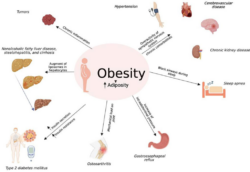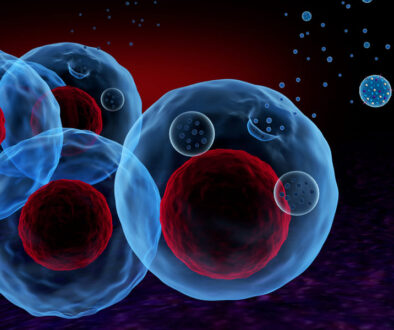Weight loss, Semaglutide &Tirzepatide: Great success but beware of the “Dark Side”!!!
A holistic weight loss program is imperative!
I have worked with patients needing to lose weight throughout my career. It has been a struggle and usually a lost battle (through neither mine or my patient’s fault).
As doctors, we continued to tell people to eat less and exercise more while treating their medical problems with various medicines.
A few years ago, we experienced a major breakthrough with the introduction of Semaglutide, which generated huge enthusiasm and demand, leading to shortages and challenges in implementing effective weight loss treatments.
Last year, Tirzepatide became available, offering additional choice. Currently it appears that there is no shortage of these medications.
The advent of these drugs has made a huge and positive impact in the way we treat our patients.
I have over 2 years of treating overweight patients with semaglutide and the results are very impressive. New evidence about the multisystem benefits of these medications is now surfacing and intensive research is going on.
However, I believe it is crucial for patients to be aware of the potential pitfalls and to use these treatments intelligently, understanding their “dark side” to ensure sustainable and healthy weight management.
Reasons to Be Happy : “The Gift That Keep Giving”.
Medical literature abounds with newly found evidence of benefits of GIP/GLP1 RA drugs.
Here are the documented benefits of GLP-1RA(Semaglutide) and GLP1-RA +GIP (Tirzepatide):
- Improvement of glycaemic control and insulin resistance
- Fat loss
- Pancreas protection
- Liver protection
- Brain protection
- Lower blood pressure
- Improved lipids and cholesterol profile
- Reduce the inflammation in blood vessels
- Improvement of renal functi
Over the past 30 months, I have successfully treated numerous patients with Semaglutide, helping many achieve their desired weight loss goals.
The most common side effect was nausea, particularly during the early stages of treatment or when increasing the dosage.
Only a small number of patients discontinued treatment due to adverse effects: one experienced severe constipation, another was concerned about media-reported risks of pancreatitis and thyroid cancer, and a third reported dizziness and bloating. Overall, the success and satisfaction derived from these treatments have been remarkable.
Reasons for My Dissatisfaction
Despite the success in weight loss, very few patients have implemented significant lifestyle changes. Exercise adoption has been minimal, and for every 4 kilograms of weight loss, patients lose approximately 1 kilogram of muscle, which is a serious concern. Many patients are happy about their clothes fitting better, but what lies beneath is equally important.
From a cosmetic perspective, I have occasionally observed “Ozempic Face,” a condition that is challenging to correct even with biostimulators in the clinic.
Some patients reached a plateau on a fixed dose, stopped losing weight and were unsure of their next steps.
A serious concern has been with patients taking medication for other reasons. After losing weight , the demands for some medications are different, usually less medication is required. There were situations when patients did not have their medications adjusted after weight loss, leading to issues like low blood pressure and heart palpitations due to unadjusted thyroid replacement.
Hair loss from nutritional deficiencies was also relatively common.
Conclusion
We now have an excellent tool to aid in weight loss and improve health. However, it is crucial to inspire patients to use this milestone to enhance their quality of life, lifespan, and healthspan. This is a turning point, and we must respond positively and enthusiastically to this opportunity.
In my clinic, I am happy to advise and guide patients to achieve healthy weight.
Potential Side Effects of GIP/GLP1 Receptor Agonists
Common side effects:
- Nausea, constipation, vomiting, diarrhea
- Fatigue, tiredness
- Altered taste
- Both medications may cause severe gastrointestinal issues such as gastroparesis, which can lead to hospitalization in some cases.
Less common but serious complications
- Pancreatitis
Severe side effects such as pancreatitis are considered rare. Pancreatitis, an inflammation of the pancreas, is a known but uncommon side effect associated with these medications. It is more likely to occur in patients who have other risk factors for pancreatitis, such as a prior history of the condition, high triglycerides, high alcohol intake, or genetic predispositions.
. Despite this, the possibility of pancreatitis is still listed as a serious side effect in the labeling for these drugs, and patients are advised to be aware of the symptoms and seek medical attention if they experience severe abdominal pain.
- Thyroid Cancer
The evidence regarding the risk of thyroid tumors associated with Ozempic (semaglutide) and Tirzepatide (Mounjaro) primarily comes from animal studies. These studies have shown an increased risk of thyroid tumors, including medullary thyroid carcinoma, in rodents treated with these medications. However, it is important to note that animal studies do not always predict human outcomes, and the risk in humans is not definitively established.
Both medications carry FDA boxed warnings, which are the strongest safety warnings, indicating the potential risk of thyroid tumors based on these animal findings. As a precaution, these drugs are typically not prescribed to individuals with a personal or family history of medullary thyroid carcinoma or those with Multiple Endocrine Neoplasia syndrome type 2.
In human clinical trials, the incidence of thyroid cancer was very low, with reported cases being isolated and representing less than 1% of study populations[. This suggests that while the warning is in place due to animal data, the actual risk in humans appears to be minimal based on current evidence. Nonetheless, patients are advised to be vigilant for symptoms of thyroid cancer, such as a lump in the neck, trouble swallowing, or persistent hoarseness, and to report these to their healthcare provider.
- Eye Complications
In clinical trials, cases of diabetic retinopathy were reported, including two cases associated with Tirzepatide at a dose of 10 m]. However, it is important to note that the overall incidence of retinopathy-related adverse events is low, and these findings highlight the need for careful monitoring of patients with pre-existing diabetic retinopathy when initiating treatment with these medications. The rapid improvement in glycemic control, which is a beneficial effect of these drugs, may contribute to these ocular complications, particularly in individuals with pre-existing retinal disease.
Let’s talk about: Overweight and Obesity
Overweight and obesity are conditions characterized by excessive fat accumulation that poses a risk to health. They are commonly assessed using the Body Mass Index (BMI), which is a calculation based on a person’s weight and height. According to the World Health Organization (WHO), a BMI of 25 or above is classified as overweight, while a BMI of 30 or above is classified as obese
Prevalence of Overweight and Obesity
The prevalence of overweight and obesity has been rising globally across all age groups.
Impact of Overweight on Overall Health
- Cardiovascular Diseases: Increased risk of heart disease, hypertension, and stroke.
- Type 2 Diabetes: Higher likelihood of developing insulin resistance and diabetes.
- Certain Cancers: Increased risk of cancers such as breast, colon, and endometrial cancer.
- Musculoskeletal Disorders: Greater risk of osteoarthritis and joint pain due to excess weight on joints.
- Respiratory Issues: Higher incidence of sleep apnea and respiratory problems.
- Gastrointestinal Disorders: Increased risk of conditions like gastroesophageal reflux disease (GERD) and fatty liver disease.
- Psychological Effects: Higher rates of anxiety, depression, and low self-esteem, particularly among children and adolescents.
- Social Consequences: Stigma and discrimination can lead to social isolation and reduced quality of life.
- Economic Burden: Increased healthcare costs and loss of productivity due to obesity-related health issues.
- Overall Mortality: Higher risk of premature death associated with obesity-related conditions.
The Impact of Overweight on Skin Health and Facial Appearance
Excess body weight, particularly in the form of obesity, can significantly impact skin health. The increased adipose tissue in overweight individuals leads to physiological changes that affect the skin’s function and appearance. These changes include alterations in the epidermal barrier, increased production of sebum, and changes in collagen structure, which can compromise skin integrity and function. Additionally, obesity can lead to circulatory and lymphatic changes, affecting skin hydration and healing.
Specific Skin Conditions Linked to Overweight
- Acne: The increased production of sebum associated with obesity can exacerbate acne, as excess oil can clog pores and lead to breakouts.
- Psoriasis: Obesity is linked to an increased risk of psoriasis, a chronic inflammatory skin condition. The pro-inflammatory cytokines produced by adipose tissue can exacerbate psoriasis symptoms.
- Skin Tags (Acrochordons): These benign skin growths are more common in overweight individuals due to friction and insulin resistance, which are associated with obesity.
- Acanthosis Nigricans: This condition, characterized by dark, velvety patches in body folds and creases, is often associated with obesity and insulin resistance.
- Intertrigo: Inflammation caused by skin-to-skin friction, particularly in warm, moist areas, is more common in obese individuals.
- Infections: Overweight individuals have a higher risk of bacterial and fungal skin infections due to compromised skin barrier function and increased skin folds.
Effects of Overweight on Facial Features
- Double Chin: Excess fat accumulation in the submental area can lead to the appearance of a double chin, which is more prevalent in overweight individuals.
- Puffiness: Overweight individuals may experience facial puffiness due to fluid retention and increased adipose tissue, which can affect facial contours.
- Changes in Skin Texture: The increased sebum production and altered collagen structure in overweight individuals can lead to changes in skin texture, making it appear less firm and more prone to sagging.
Overall, managing weight through lifestyle changes and medical interventions can help mitigate these skin-related issues and improve overall skin health.





